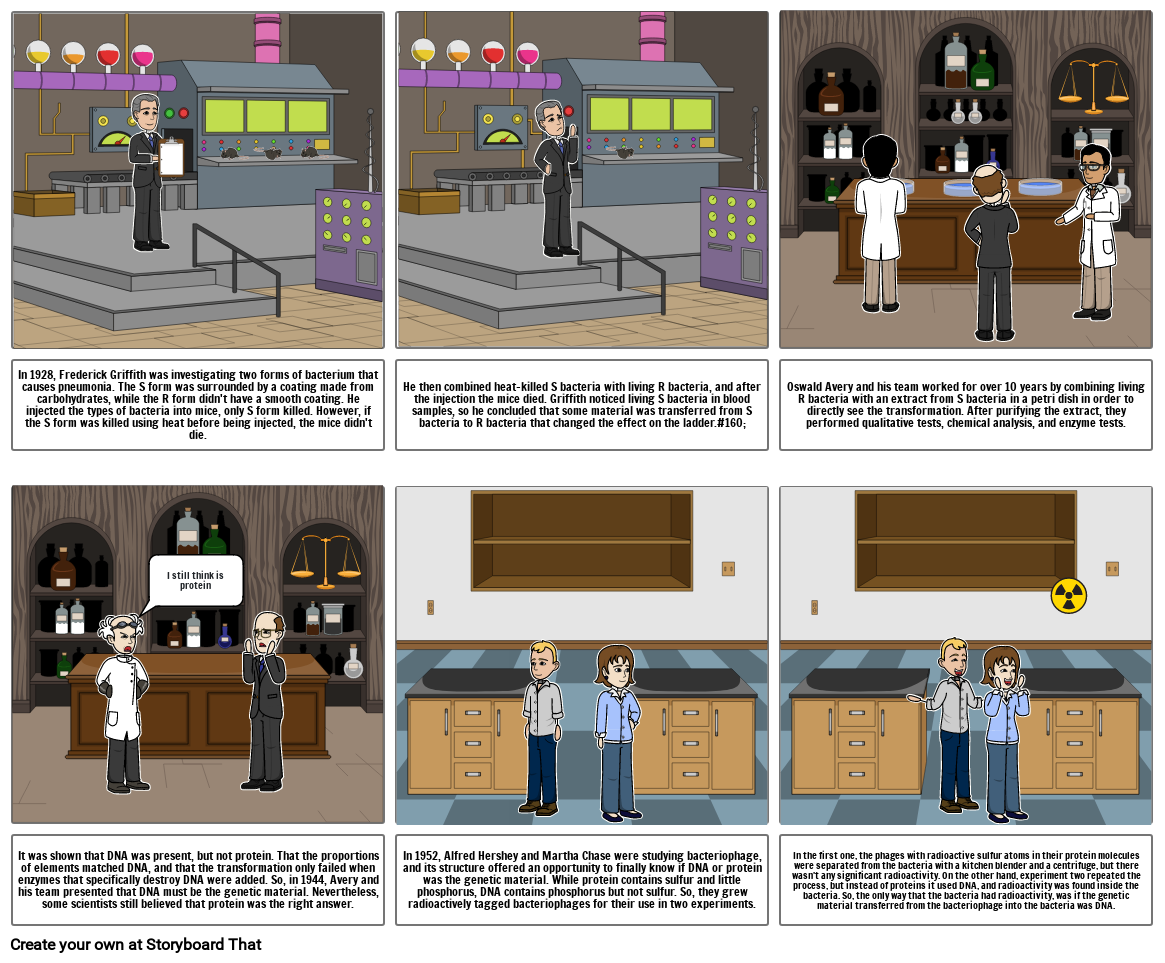sadfghjkl

Storyboard Popis
dfghjkl
Text z Príbehu
- In 1928, Frederick Griffith was investigating two forms of bacterium that causes pneumonia. The S form was surrounded by a coating made from carbohydrates, while the R form didn't have a smooth coating. He injected the types of bacteria into mice, only S form killed. However, if the S form was killed using heat before being injected, the mice didn't die.
- I still think is protein
- He then combined heat-killed S bacteria with living R bacteria, and after the injection the mice died. Griffith noticed living S bacteria in blood samples, so he concluded that some material was transferred from S bacteria to R bacteria that changed the effect on the ladder.#160;
- Oswald Avery and his team worked for over 10 years by combining living R bacteria with an extract from S bacteria in a petri dish in order to directly see the transformation. After purifying the extract, they performed qualitative tests, chemical analysis, and enzyme tests.
- It was shown that DNA was present, but not protein. That the proportions of elements matched DNA, and that the transformation only failed when enzymes that specifically destroy DNA were added. So, in 1944, Avery and his team presented that DNA must be the genetic material. Nevertheless, some scientists still believed that protein was the right answer.
- In 1952, Alfred Hershey and Martha Chase were studying bacteriophage, and its structure offered an opportunity to finally know if DNA or protein was the genetic material. While protein contains sulfur and little phosphorus, DNA contains phosphorus but not sulfur. So, they grew radioactively tagged bacteriophages for their use in two experiments.
- In the first one, the phages with radioactive sulfur atoms in their protein molecules were separated from the bacteria with a kitchen blender and a centrifuge, but there wasn't any significant radioactivity. On the other hand, experiment two repeated the process, but instead of proteins it used DNA, and radioactivity was found inside the bacteria. So, the only way that the bacteria had radioactivity, was if the genetic material transferred from the bacteriophage into the bacteria was DNA.
Bolo vytvorených viac ako 30 miliónov storyboardov

